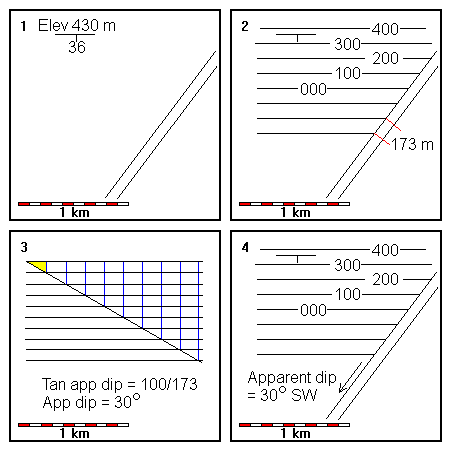Find the Apparent Dip of a Plane
Steven Dutch, Professor Emeritus, Natural and Applied Sciences, University of Wisconsin - Green Bay
Sometimes we see sections of planes oblique to their strike. In cases like these, the slope of the plane is not its true dip but shallower. In the case of a section parallel to the strike, the plane can appear horizontal. The dip of a plane as seen in an oblique section is called its apparent dip. We might want to know the apparent dip a bed would have in order to draw a cross-section, calculate where it would outcrop in a trench or highway cut, or for a variety of other reasons.
This problem is actually an intersecting-plane problem where one of the planes is vertical. We already know the trend of the intersection -- it's simply the strike of the section plane. All we need to do, then, is find the plunge, which is the apparent dip as seen in the section plane.
Example

Trigonometric Solution
Tan (Apparent Dip) = Tan (True Dip) Sin (Angle between strike and cross-section).
In the example above, the true dip = 36 degrees and the angle between the strike and cross-section equals 53 degrees, so we have Tan (Apparent Dip) = Tan (36) Sin (53) = 0.58, and Apparent dip = 30 degrees.
Return to Course Syllabus
Return to Techniques Manual Index
Return to Professor Dutch's Home Page
Created 5 January 1999, Last Update 12 June 2020